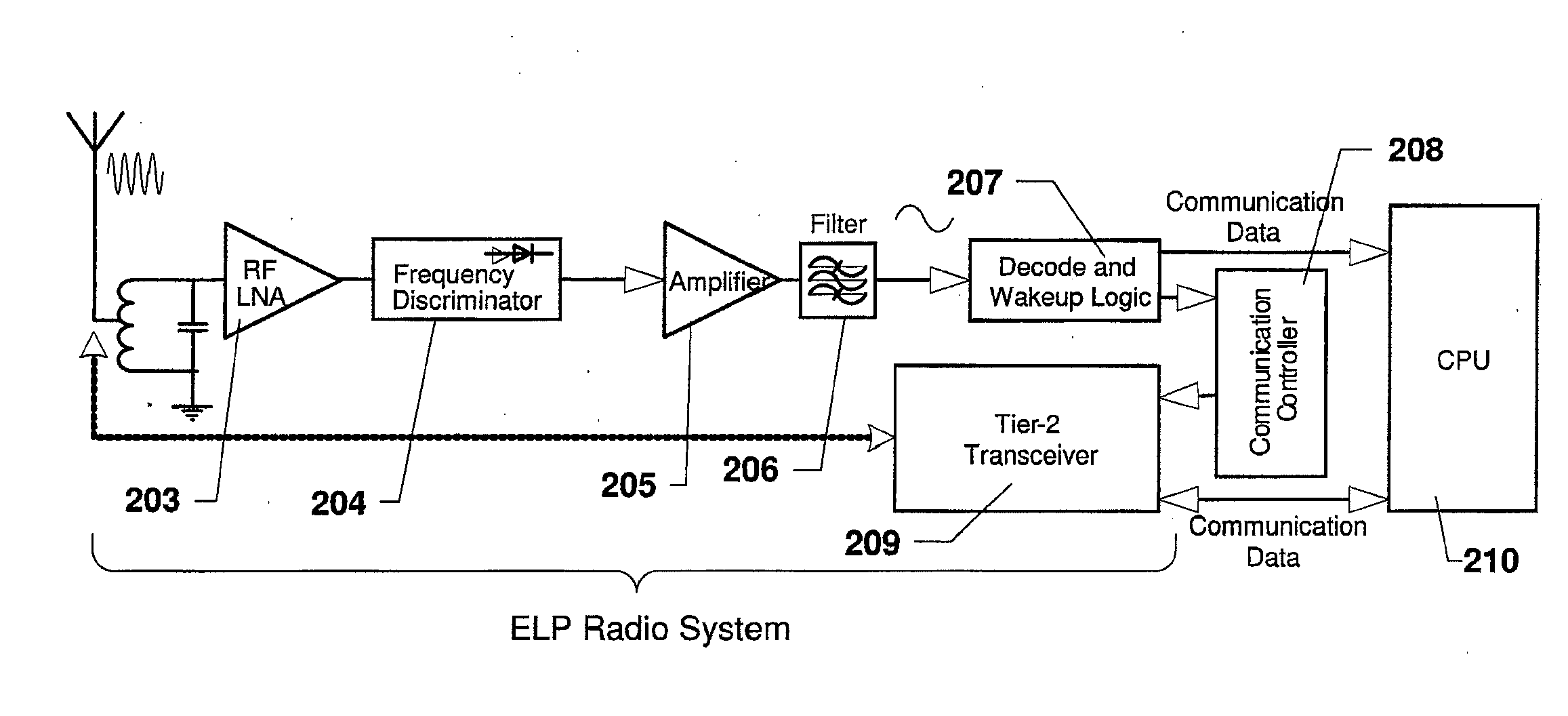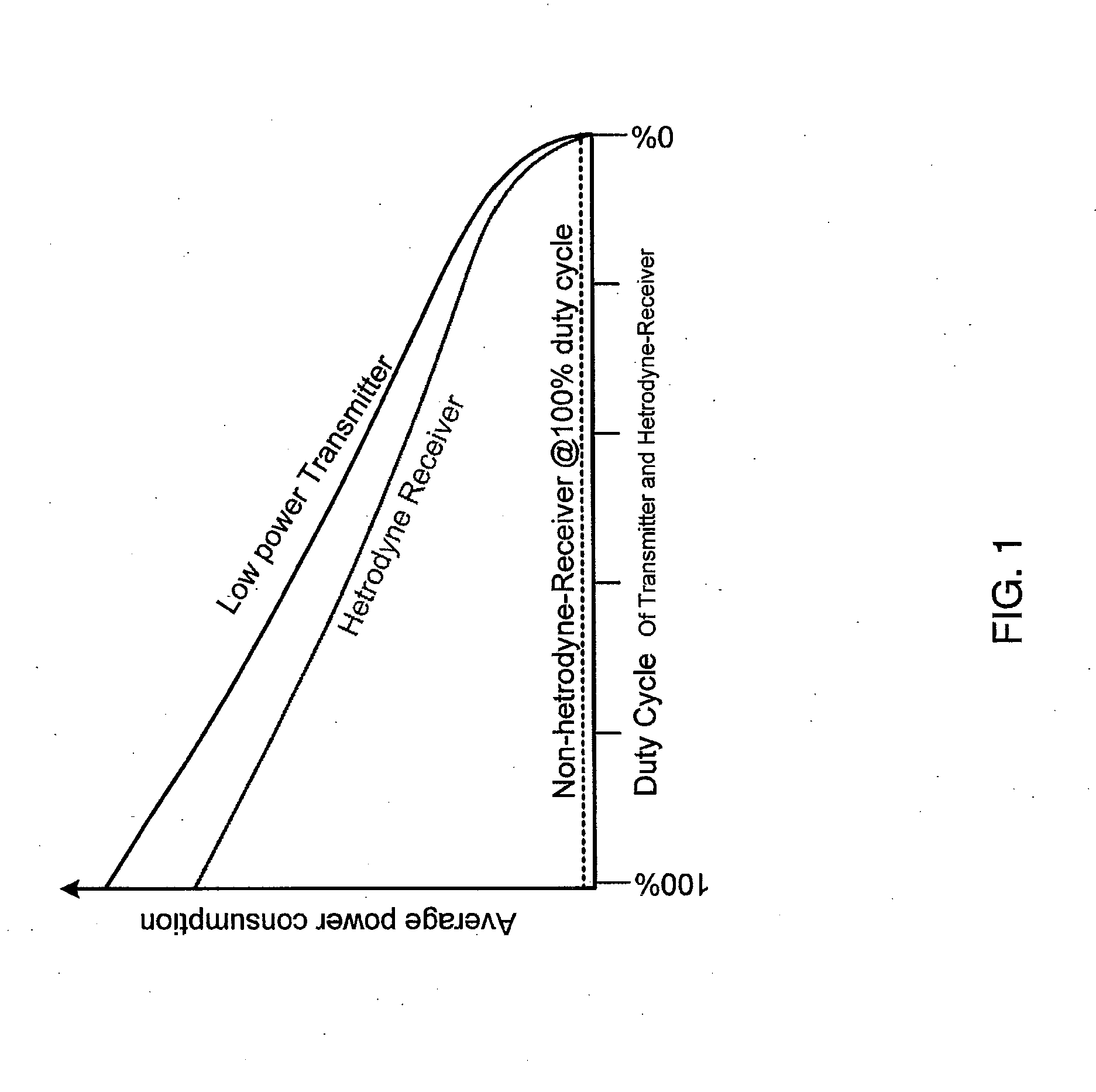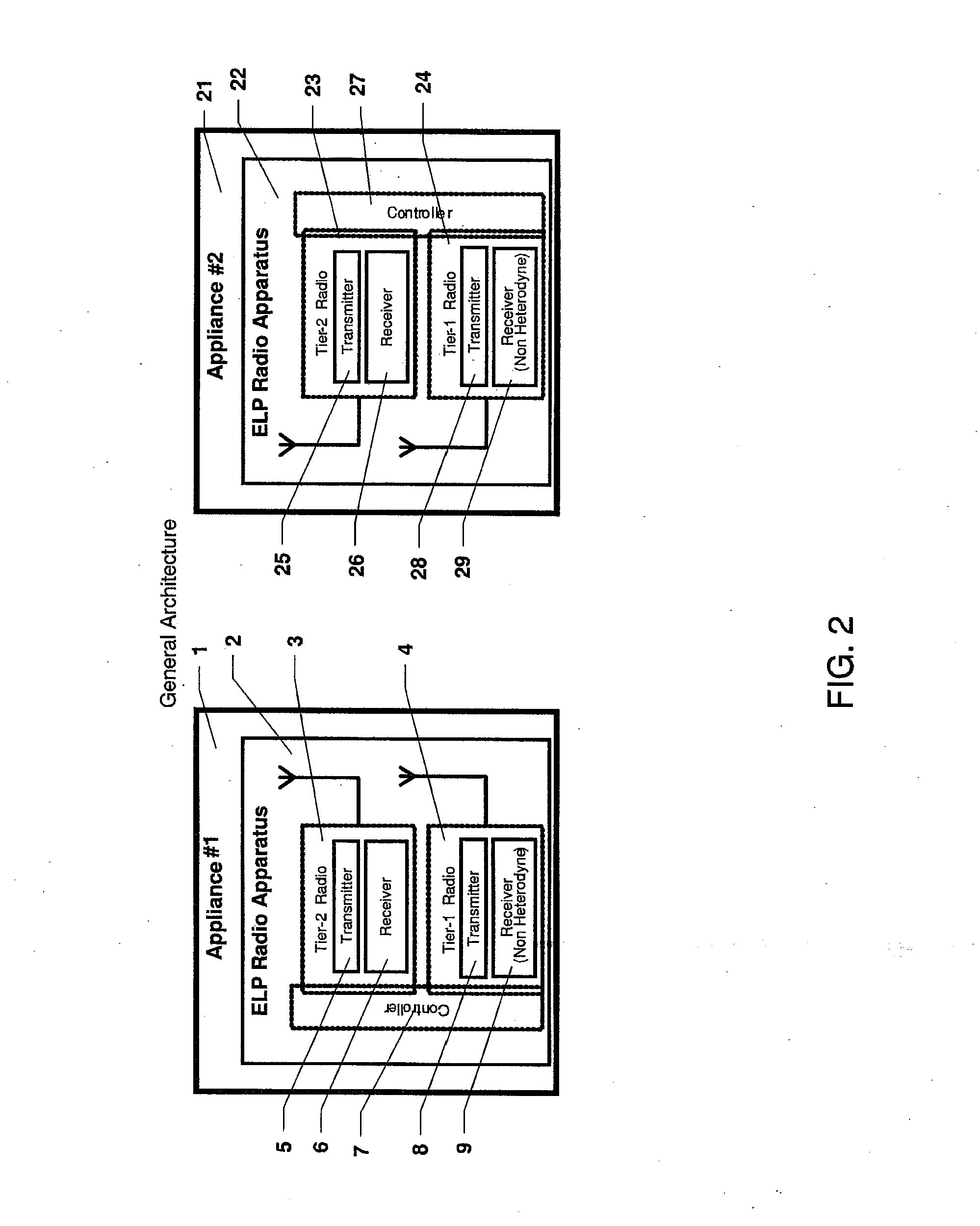Low Power Radio Communication System
a radio communication system and low power technology, applied in the field of radio communication system, can solve the problems of unacceptably delayed communication, non-heterodyne receivers may require more time to correctly identify distant communication partners, etc., and achieve the effects of reducing the average power of radio communication, low power consumption, and low power consumption
- Summary
- Abstract
- Description
- Claims
- Application Information
AI Technical Summary
Benefits of technology
Problems solved by technology
Method used
Image
Examples
Embodiment Construction
[0061]The present invention realizes low operating power while maintaining low latency, asynchronous communication. One advantage of the present invention is a radio communication system in which a low power receiver has the requisite sensitivity and communication bandwidth to support asynchronous communication.
[0062]As mentioned above, FIG. 1 illustrates average power consumption as a function of duty cycle for a typical low-power transmitter, a “heterodyne” receiver and a “non-heterodyne” receiver. A desirable radio receiver is one that operates at a moderate to modest average power consumption, but which has an acceptable duty cycle so undue delay in the communication process is avoided. A heterodyne receiver's average power consumption cannot be significantly reduced by a duty cycle method without sacrificing latency.
[0063]Many conventional low-power analog radio receivers are super-heterodyne based. Such receivers spend much of their power running the local-oscillator (LO) and ...
PUM
 Login to View More
Login to View More Abstract
Description
Claims
Application Information
 Login to View More
Login to View More - R&D
- Intellectual Property
- Life Sciences
- Materials
- Tech Scout
- Unparalleled Data Quality
- Higher Quality Content
- 60% Fewer Hallucinations
Browse by: Latest US Patents, China's latest patents, Technical Efficacy Thesaurus, Application Domain, Technology Topic, Popular Technical Reports.
© 2025 PatSnap. All rights reserved.Legal|Privacy policy|Modern Slavery Act Transparency Statement|Sitemap|About US| Contact US: help@patsnap.com



